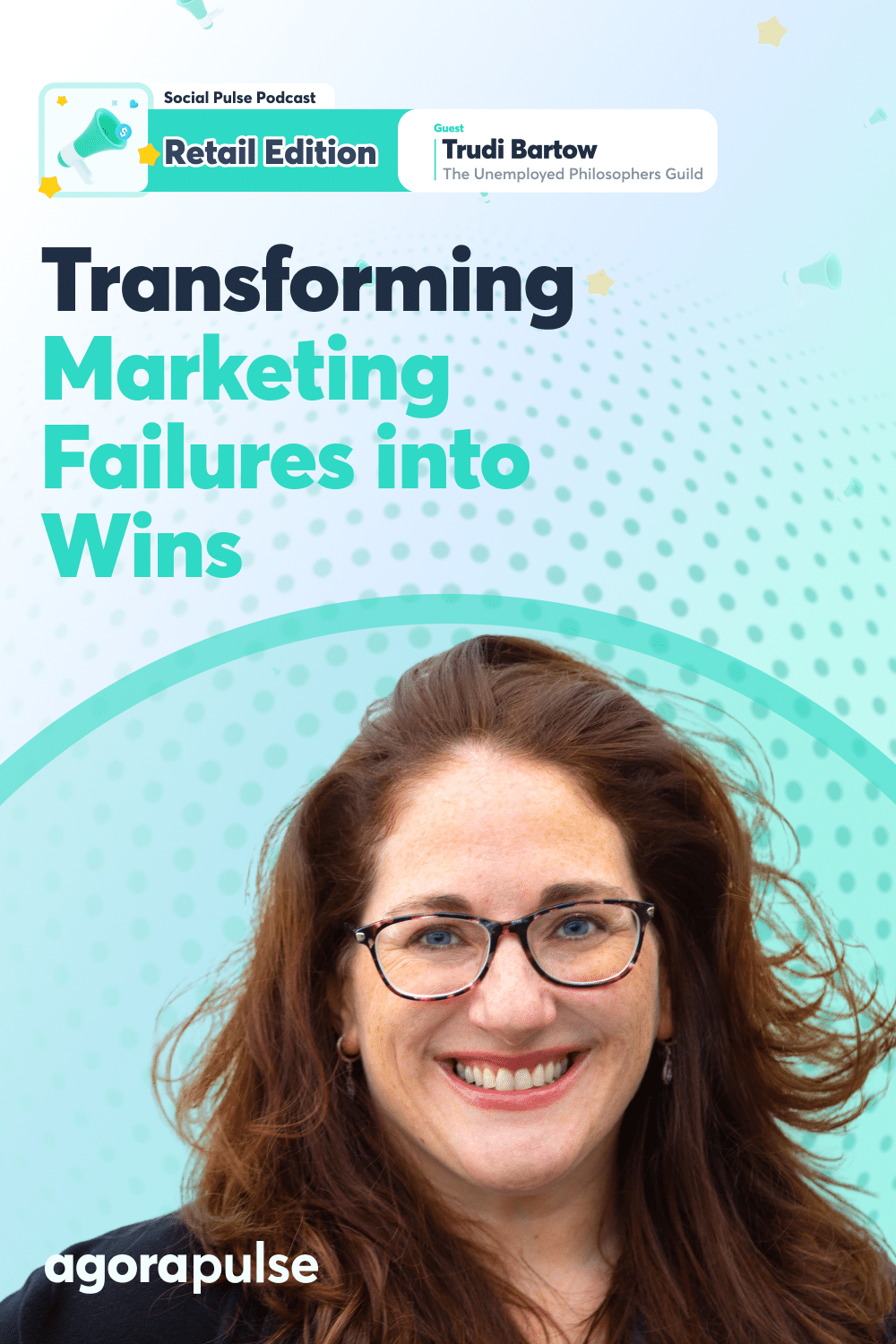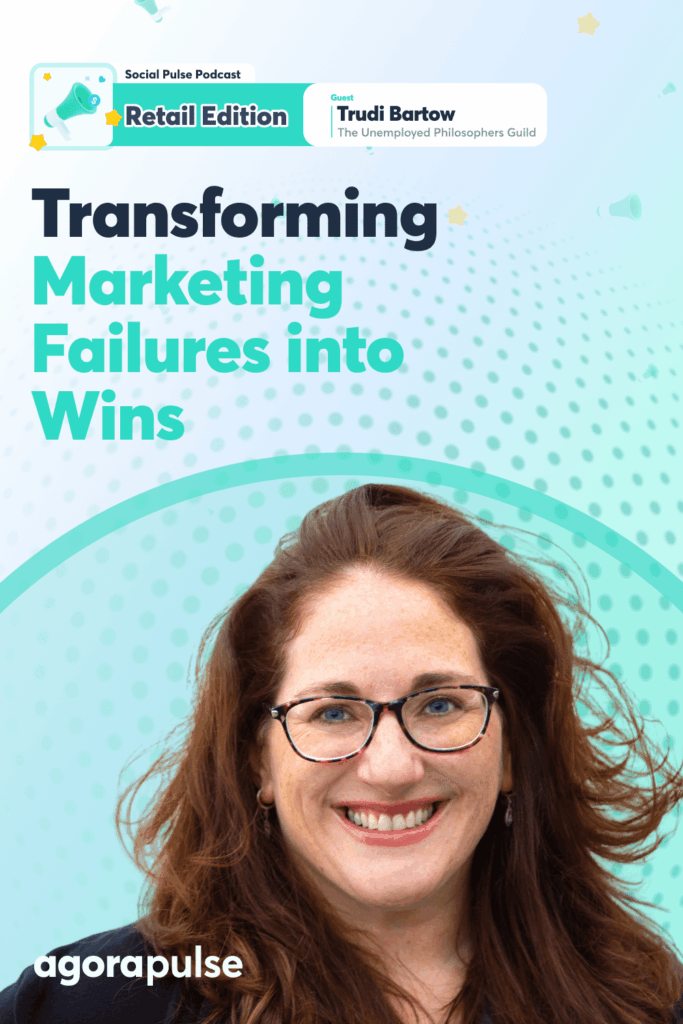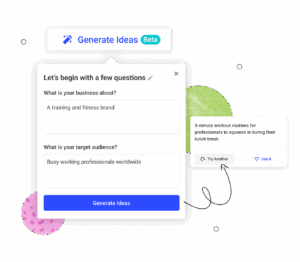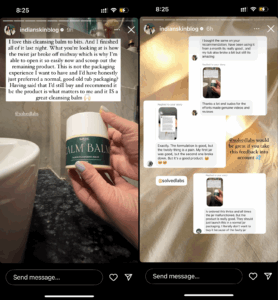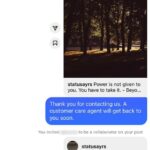Every day, retail marketers face this challenge: how to pivot quickly when plans go sideways and turn embarrassing moments into golden opportunities.
In this recap episode of Social Pulse: Retail Edition, powered by Agorapulse guest, Trudi Bartow, has mastered throughout her impressive career. With over 20 years of experience in the gift and home industry, Trudi currently holds a key leadership role at the Unemployed Philosophers Guild, where she oversees sales strategy and team development. As an executive board member of the Gift and Home Trade Association and a frequent speaker at industry events, Trudi has transformed countless marketing mishaps into unexpected wins.
[Listen to the full episode below, or get the highlights of the Social Pulse: Agency Edition, powered by Agorapulse. Try it for free today.]
Walk us through what happened with that now-infamous empty party at the New York Gift Show
Trudi Bartow: Right away, I’ll tell you my tale of woe. So this was many years ago, in full transparency. It was sort of maybe 15ish years ago. I was very young in the industry, but there’s this amazing trade show called The New York Gift Fair. It used to be called the New York International Gift Fair (things re-brand and exchange). And it’s this big industry event where people from all over the world come to New York City. That’s where I’m from to look and buy goods and gifts for their retail shops for the next season.
And I was cocky, and I was at this brilliant art publisher called Harry Abrams. They made gorgeous, lush coffee table books, and we were selling left and right. It was a real heyday. And I thought, “Wouldn’t it be such a great idea to have a party to thank all of our buyers, to tell them we love them, to showcase the new lines?” We had cookbooks, so we could make cocktails and appetizers from these books. And so there he goes, “I thought this was great.” So we rented a space, we spent all this marketing budget, and we had gift bags made. I made invitations. And we get to the event after a long day at the show. There’s no one there, and 10 minutes, 15 minutes, 20 minutes, nobody is arriving.
It turned out later, after I thought I was getting fired, and after a deep dive into what happened, that I didn’t check the community calendar. I didn’t look at all the events that were happening during New York now, and one of our very big, important gift industry rivals was taking buyers on a circle line cruise or something around Manhattan, so they weren’t even on land.
It was a big lesson learned for me.
Mike Allton: Wow. And I have to tell you, I’ve hosted events, I’ve spoken at events, and I’ve gone through this kind of fear and trepidation so many times.
I did back in 2023, every single month, I was hosting a different VIP event in a different city, usually attached to an event, just like what you were talking about, right? And every time I’m showing up early ’cause I want to make sure everything’s ready, and then I sit and sweat and wait, does anybody show up?
Is anybody going to be there? And there were times when there were very few people, which made me extremely nervous both during the event and for my job. That, and just recently, I have to tell you, I was speaking at an event here in St. Louis, the St. Louis Business Expo, and I was doing a talk on artificial intelligence in the AI revolution.
I was sitting near my stage and waiting while the guy before me was about to go on stage, and he went up, he got his presentation ready, and everything like that, and he was standing there, and there was not one person seated in his audience.
And he waited, and eventually somebody who knew walked up, and they ended up just having a private conversation in the front row, and then a few minutes later he left. And so I got up thinking, “Oh, man, is anybody going to come to my talk?” after I just witnessed and felt horrible for this guy? He looked like he was fine. He looked like he wasn’t distressed. I don’t know if I could have stayed at that event for one second longer.
Trudi Bartow: What was going through your mind? Sheer panic, just stress. I wanted to go to the bathroom and cry. The reality is we had an event, we had catering, we had a space, and a few buyers did show up.
It wasn’t empty, right? There was a very small handful of people. And all I could think about was what a waste of money. And then it hit me, right? Like, I work in publishing. We have an office full of people who work till 8, 9, or 10 p.m. Just call them to eat the food.
So it’s not a waste. And that’s what we did. It was a quick pivot, so we had no intention of doing anything. We just were like, we have to eat this food. So, we made a bunch of phone calls, and we called some friends. We called everyone in the office. We tabbed everyone down. And the room got, I wouldn’t say filled, but there was more of a presence, more people there.
And then I just said to our marketing person, I was like, “Just start taking photos. It looks like this is a party. Don’t let this go to waste. Just zoom in on people’s plates, zoom in on the books, stacked in the corner, zoom in on the goodie bags, and like I’ll have the interns who were there like go and start taking them, like they’re party guests.” And that’s what we did.
And then it just became about how we can get the most out of this experience and how we can make the people who were there feel the most love. And how do we make the brand look successful? Because I didn’t want to show up tomorrow at the New York gift show, and people are like, “Wow, I heard you through a real failure yesterday.”
It had to be spun as something. That could be memorable. I’m the first person to make a joke at myself because it’s all right. Let’s all laugh and move on. We’ve all had terrible experiences in the grand scheme of things. I threw a party and no one came. It isn’t the worst thing in the world.
So we just got a chuckle, moved on, and we did, and we got a lot of great exposure out of it internally.
“[Our failure] had to be spun as something. That could be memorable. I’m the first person to make a joke at myself because it’s all right. Let’s all laugh and move on. We’ve all had terrible experiences in the grand scheme of things. I threw a party and no one came. It isn’t the worst thing in the world.”
Was that [decision] just an inspiration that came to you, or what was going through your mind that made you decide?
Trudi Bartow: I don’t know if anything was going through my mind.
I was operating in panic and instinct at that moment. That’s just the truth of it. And I just knew that we were a big illustrated art book publisher, and I knew that photography was golden. That’s what makes a book beautiful. That’s what makes a catalog come to life. That’s what makes sales material engaging is the sort of photography and lifestyle shots it uses.
I don’t know what’s better than gold or platinum. So that’s like the important crucial thing where you, if you could show people engaging, I love that you use the expression, memorable moments. There’s no bringing us back into today’s world, but there’s this real sort of tension point.
What I do with the Unemployed Philosophers Guild is I sell to stores, right? I’m in brick and mortar, and there’s this tension point about brick and mortar versus retail, online retail. And like, how do these two spaces exist, and how can they exist for a customer?
And the real big buzzwords in every retailer panel I go to and every event are: how do you make it memorable in the store, which is the same experience, and how to make it memorable in your social, or how to make it memorable in your event. How do you make that store experience something that a customer will continue to interact with, that they’ll come back to? How do you make it all about them? It’s an experience and not a shopping point, right? So that’s all it is, creating this environment, which is what I was trying to do at that moment, is just to take advantage of this situation so that we’d be able to create more moments later.
Was there anything you probably would not have created otherwise if the event had gone on as planned?
Trudi Bartow: I don’t know if we would’ve done it any differently. Ultimately, we created these assets, and this sort of campaign around books is always the life of the party. And so we had this great photoshoot of people enjoying themselves at a cocktail party, having, like I said, delicious nibbles, delicious cocktails.
There were books everywhere, and maybe that would have come across if the room was packed, or maybe it actually wouldn’t have because there wouldn’t have been space for a photographer to get intimate with two people having a conversation, holding a book or having, passing something back and forth to look at. A photographer would’ve taken away from that.
We’re trying to make the most of the situation, and everyone knew what was going on. It seemed very authentic ’cause people were having a good time, and everyone in the office loved it. But everyone knew at the end, it was a job.
So we needed to take these photos and we needed to be intrusive into their private moments in the corner. And it worked out well. Maybe looking at it now with wisdom. In 2020, it was the best idea. Thank God no one showed up.
Do you have a general framework for assessing or understanding when a particular marketing campaign or initiative just isn’t working and determining how to pivot?
Trudi Bartow: I guess it all depends on what the metrics are that you set out before you launch the campaign.
What’s the goal of the campaign? I think we’re all good at being creative, and we’re all good at thinking, you know what the result is, but—this is hard for me to say as a sales director—it’s not always about how many dollars the campaign generates, right?
That could maybe not be the goal. Maybe the goal is more followers, more eyeballs, more engagement. Maybe the goal is more brand awareness and education. And so once you go into a campaign, I think it’s always crucial to have. What you want to get out of it, what that result is to be, very clearly defined, because only then can you decide, wow, this is not working.
We need to pivot. So like great examples are when you do like email marketing campaigns you should always have your AB testing ready to go so that if you launch with A, you know what metrics you’re going to hit before you get to B or even C or even D. I mean, you don’t want to flood and have so many options because then nothing will be successful.
Partly, you have to roll with things, and that’s the, as I said in the beginning, you have to be okay with failure, too, because that’s where a lot of tremendous learning lessons come into play. Like, why did it fail? What was the engagement? What was the reaction? Wow, we should never use this as an example, but we should never use red ever again.
Our customer just hates red. Or our customer hates Calibri font, or they hate this. Sometimes those takeaways are more valuable than if your campaign had been successful because you’re just learning to identify your customer, and then when you have something really meaningful for them, you have this huge sort of infrastructure that you’ve already put in place to know how to engage with them the strongest.
Are there specific kinds of failures that you think retail marketers might learn better from than others?
Trudi Bartow: I think that’s an excellent question. It’s so open-ended that I’m not sure I can answer it because the reality is everyone’s marketing is different based on the type of experience they’re putting together for their customer, based on who their customer is, and based on what they’re doing.
If you’re just an influencer and your goal is to gain more followers, you might not be willing to take more risks because you can’t have the drop off. So you might be more conservative, where if you are a retailer and you’re trying to get people in the door, you might be willing to take a lot of risks so that you can get the most amount of people exposed to what you’re doing with the hope that there’s that conversion rate.
So it’s hard to say how you pivot. I think that everybody should have a measure of comfort with failure, just because you’re never going to succeed a hundred percent of the time. And I think about talking.
You have to understand your risk tolerance, too, right? It’s really important to take your temperature constantly throughout the experiment because if you are not a risk-averse person, you might be willing to go to leaps and bounds.
But if your team is more nervous or more bottom line focused, is everybody on the same page? So there have to be constant check-ins along the way, especially if you’re testing for failure or testing for, you know, how to make the best. Pivot. Yeah, that’s that, that’s what I’ll say about that.
Trudi Bartow: Yeah, no, I a hundred percent agree with you. So I might look young, but I’ve been in this game for a very long time.
This story happened, as I was telling you before we started interviewing, the story happened before Instagram was around. I’ve seen a lot of changing faces, and I am so excited about being able to work with my team on social media these days because you can take a lot of risks really quickly, and you can move very fast.
You could test things very quickly at such low monetary costs, right? There might be a cost in other ways depending on what you do, but you can really. Try things out, and you shouldn’t be scared to try things. You should try all manner of content. You should livestream, you should put your stories in.
You should try something on Facebook, try something on X, try something on Instagram, like looking for your audience. Like you should be on this big-gathering mission to find what works best for you. And because of the sort of entry point with social media, you can get a lot of eyeballs fast, or you can get no eyeballs fast.
It just doesn’t matter how you’re looking at it, but it’s this amazing tool that you just have to be consistent about. That’s really what I tell my team or anyone that I’m working with. It doesn’t matter if you fail because there’s still tomorrow, and tomorrow needs new content as well.
As long as you’re consistently posting new content, something that didn’t work will be gone the next day. So you might as well just keep creating and keep putting out there. I really believe in authenticity, so you have to be truthful with your customer or your end user. And you have to show your authentic self.
And that could be a person’s self or a brand’s self. You want to know what your brand is so that you can convey that message. And then once you find where you shine, you want to not stay in your lane, ’cause you always want to be looking for new opportunities and new people to expose yourself to, but then you can lean heavier into where you’re the most successful.
How do you create this environment where people feel safe saying, “You know what? This isn’t working. We need to change things up.”
Trudi Bartow: So, thankfully, at the Unemployed Philosophers Guild, we’re a really small company. There are 10 of us.
We all have high stakes and high investment and buy-in into the process of making it work. I don’t like to say like we’re a family, we are a very close team, and we’re in each other’s lives, and we. So in that respect, it’s an anomaly of all the places I’ve worked at, I’ve worked at much bigger corporate America-type deals where there are a lot of rules and procedures and metrics that have to be hit every time.
And I think those are the harder places to build this team and support. But it comes down to the manager, right? You might be the biggest team player, and you might be the most creative, the most passionate, the one who comes in early, staying late. But if you’re not getting support from the top level down, you have to really think about if that’s the right place for you, which is sidetracked from this conversation.
You need to feel supported so that you can test your wings, and you need to make sure that you’re in an environment that rewards you. And that lets you, doesn’t keep you in the safe bubble that lets you experiment and lets you learn.
I think it’s really important as a sort of manager myself, if my team isn’t one day better than me, I didn’t do a good job, right? If my team just stays at one level and they’re not looking to grow or to take on new responsibilities or to teach the next generation of workers who come in. I didn’t do a good job. I didn’t support them. I didn’t give them what they needed.
So I think it’s just about finding that right space.
What other kinds of resources or communities do you turn to for inspiration and support when you want ideas for marketing campaigns?
Trudi Bartow: I’m a big believer in education. I feel you don’t know what you don’t know, and man, what I don’t know can fill a warehouse. And you have to understand that the world is ever changing, and there are always going to be people in the room who are smarter than you, and you should listen to them.
And never be afraid to say. Wait, walk me through that. How does that work? So in that regard, I think it’s really important to just subscribe to everything, right? Be like an over-consumer of newsletters. I don’t want to name names of things that I’m obsessed with, but there are tons of really great newsletters out there that can dive into economics, into marketing, and into successes and failures.
There are amazing industry-specific groups. Everybody should be a member of a networking group. And the more networking groups, the better. And you can find that sort of family. If you’re looking on LinkedIn, you can find groups, you can be a member, and a lot of them are unfortunately paid dues, but it’s worth the expense.
To be able to network with people and to hear their ideas. And I know it can be time-consuming, but try to go if you’re a member of an organization. Go to every webinar, right? Every webinar that they put together, every conference that they put together, you want to be in the room where it’s happening just because you want to be able to learn from people, to see reactions, to see what they’re doing.
Always keep your ears and your eyes open, and not just listen. I know this is like one of those hokey new age phrases, but you have to always actively be listening. Don’t just hear and then be ready to dive in with your thoughts and your comments. Like really take in what everyone is saying because if you’re willing to be part of the conversation, everybody will spill their guts and you can learn everyone’s successes and failures and you can just integrate that all back into what you’re doing if you’re authentic and you’re actively listening.
They will welcome you into these conversations.
Thank you for reading the recap highlights from this episode of Social Pulse: Retail Edition, powered by Agorapulse. Try it for free today. And don’t miss other editions of the Social Pulse Podcast, like the Agency, Hospitality, and B2B editions.
